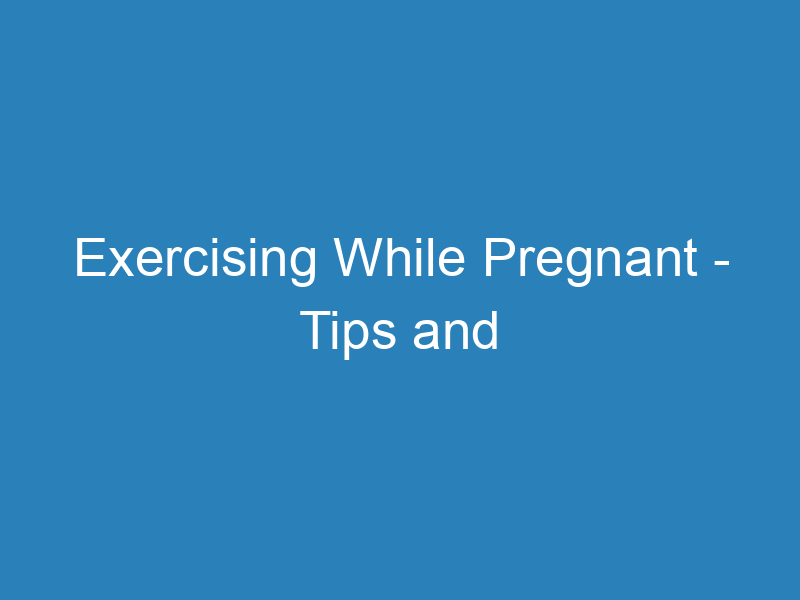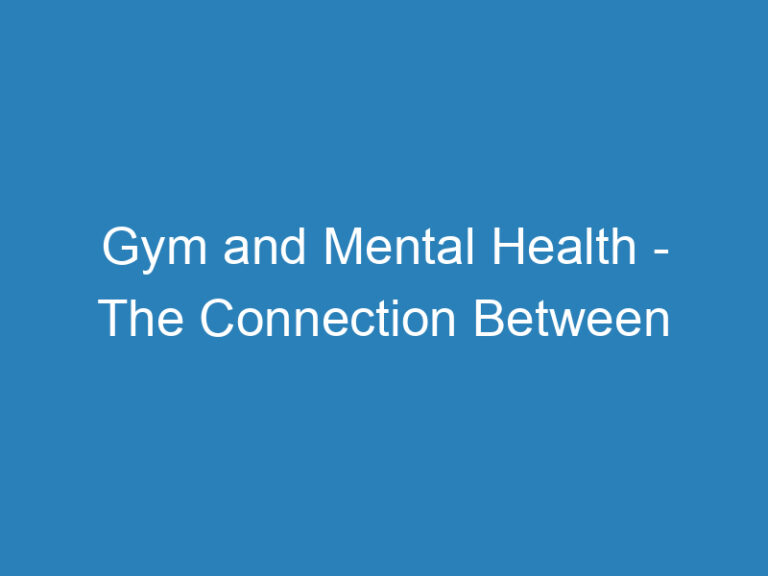Exercising while pregnant can have numerous benefits for both the mother and the unborn child. It can help improve mood, increase energy levels, promote better sleep, and even reduce pregnancy-related discomfort. However, it is important to approach exercise during pregnancy with caution and make certain considerations to ensure the safety of both mom and baby. This article will provide some useful tips and guidelines for exercising while pregnant.
Consult with Your Healthcare Provider
Before starting or continuing an exercise routine during pregnancy, it is crucial to consult with your healthcare provider. Every pregnancy is different, and certain medical conditions or complications may require modifications or restrictions on physical activity. Your healthcare provider can give you personalized advice based on your specific situation and health history.
Choose Safe and Low-Impact Exercises
During pregnancy, it is important to opt for safe and low-impact exercises that minimize the risk of injury or excessive strain on your body. Some excellent choices include walking, swimming, stationary cycling, prenatal yoga, and low-impact aerobics. These activities help maintain cardiovascular fitness, promote muscle strength, and improve flexibility without putting excessive stress on your joints.
Listen to Your Body
Pay close attention to your body’s cues during exercise while pregnant. This is not the time to push yourself to the limit or aim for personal records. Your body is undergoing significant changes, and you may feel more fatigued or short of breath than usual. If you experience any pain, dizziness, lightheadedness, or shortness of breath, it is essential to slow down or stop exercising and rest. This is a sign that your body needs a break.
Stay Hydrated
Proper hydration is crucial during pregnancy and becomes even more important when exercising. Remember to drink plenty of water before, during, and after your workout. This is essential to prevent dehydration, which can lead to complications and affect both your and your baby’s health. Keep a water bottle handy and take regular sips throughout your exercise session.
Warm-up and Cool Down
Prior to starting any exercise routine, it is essential to warm up your muscles and gradually increase your heart rate. This can be done with gentle stretching exercises or a short walk. Similarly, at the end of your workout, take the time to cool down by stretching and allowing your body to gradually return to its pre-exercise state. This helps prevent muscle soreness and promotes better circulation.
Wear Proper Attire
Investing in proper workout attire can make exercising while pregnant much more comfortable. Choose breathable fabrics that allow for movement and provide good support for your growing belly and breasts. Wearing a supportive sports bra is especially important during pregnancy to minimize discomfort and reduce the risk of stretching ligaments.
Modify or Avoid Certain Exercises
While many exercises are safe during pregnancy, there are some that should be modified or avoided altogether. Activities with a high risk of falling or causing abdominal trauma, such as contact sports, horseback riding, skiing, and certain types of high-intensity or extreme sports, should be avoided. Additionally, exercises that involve lying flat on your back after the first trimester should be modified or substituted with safer alternatives to prevent decreased blood flow to the baby.
Monitor Your Heart Rate
Keeping track of your heart rate during exercise is a useful tool to ensure you are staying within a safe and appropriate range. A general guideline is to aim for a heart rate that does not exceed 140 beats per minute. However, every woman is different, and some may need to adjust this guideline based on their pre-pregnancy fitness level and individual circumstances. Consult your healthcare provider for specific heart rate recommendations.
Posture and Balance
As your body changes during pregnancy, it is important to pay attention to your posture and maintain good balance during exercise. Hormonal changes can loosen your joints and alter your center of gravity, making you more prone to falls or injuries. Be mindful of your movements, keep your feet firmly planted on the ground, and avoid exercises that require sudden changes in direction or impact.
In conclusion, exercising while pregnant can offer numerous benefits for both mom and baby, including improved mood, increased energy, and reduced discomfort. However, it is essential to approach exercise during pregnancy with caution and make certain considerations to ensure safety. By consulting with your healthcare provider, choosing safe exercises, listening to your body, staying hydrated, and practicing proper technique, you can enjoy a healthy and active pregnancy. Remember, each pregnancy is unique, so it is important to tailor your exercise routine to your individual circumstances and always prioritize the well-being of both you and your baby.

















